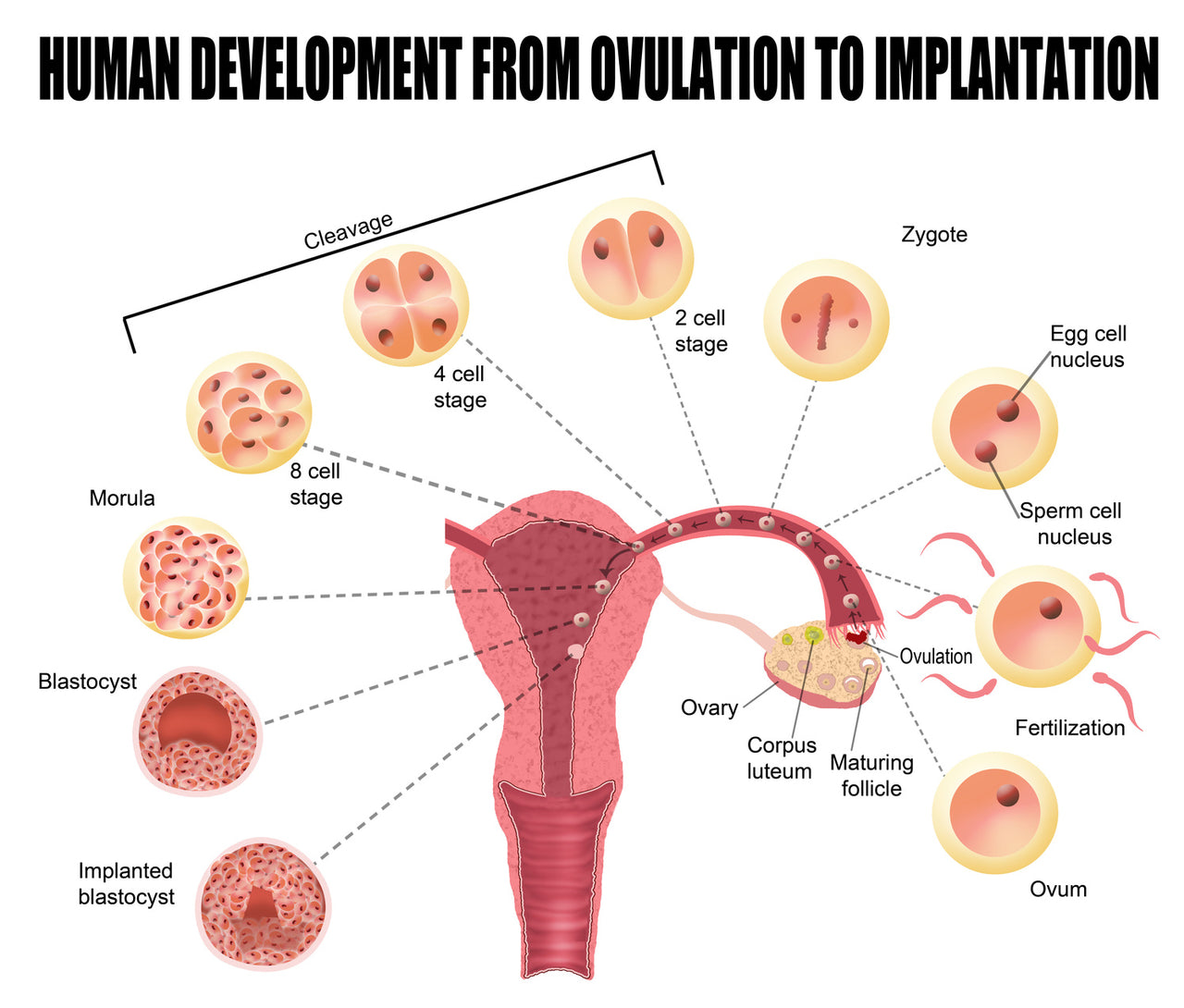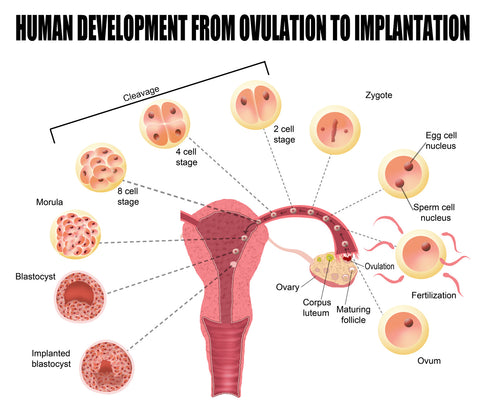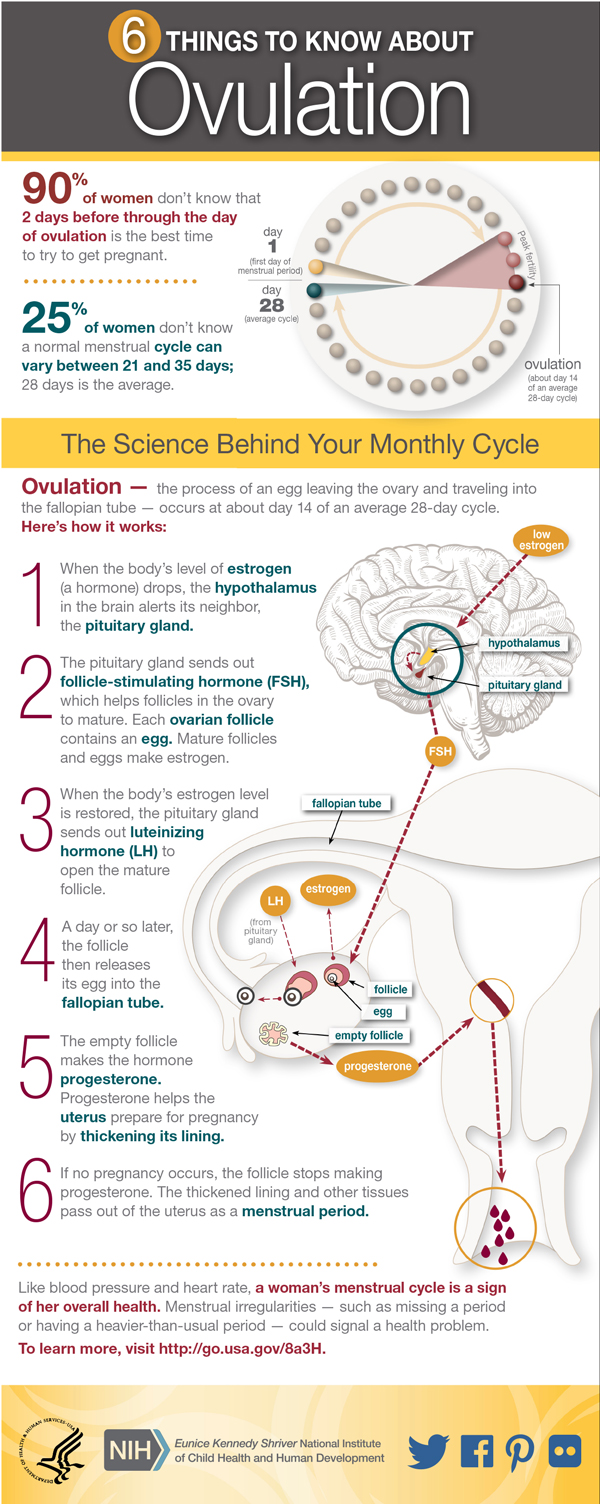
Ovulation and Getting Pregnant
If you are trying to get pregnant, you need to have a decent grasp of how your system works. Getting pregnant involves more than just having sex. You have to know when you ovulate. If you are not having sex around ovulation, you will not get pregnant.
What is Ovulation
Simply stated, ovulation is when your ovary releases an egg into your fallopian tubes. If you have the right hormone balance, you will ovulate once every cycle. The length of a menstrual cycle will vary from woman to woman. A typical cycle is one that arrives every month and is between 21 and 35 days long. The average length is 28 days long.

Hormones and Ovulation
The ovarian hormones produced during ovulation are Estradiol, an estrogen, and progesterone. These create conditions that are very conducive for egg fertilization.
The developing follicle produces the estradiol before you ovulate and encourages the glands of the cervix to create fertile cervical mucus. The egg white cervical mucus is crucial for the sperm to swim through the cervix and reach the ovum. Furthermore, estradiol promotes the growth of the endometrium lining in the uterus. The lining of the uterus is vital because it is where the fertilized egg will implant and grow.
The corpus luteum forms from the ruptured follicle after ovulation. The purpose of the corpus luteum is to produce progesterone and estradiol. Progesterone helps the estrogen-primed endometrium prepare for the implantation of the fertilized egg.
If fertilization doesn't happen, the production of estradiol and progesterone will decrease. Menstrual bleeding will start 11 to 16 days after ovulation.
Ovulation and Conception
Once ovulation has occurred, fertilization of the egg can only happen within the next 12 to 24 hours. After this time, the egg will start deteriorating, and conception cannot occur. A fertilized egg travel through the fallopian tube to the uterus. It will then implant in the uterine lining to continue its growth.
If fertilization does not occur, the egg will deteriorate and your period will arrive. Sometimes anovulatory cycles can occur; these are cycles in which an egg is not released. A period will still happen, even if you do not ovulate.

Important Facts About Ovulation:
- Usually, your ovary only releases a single egg. Very rarely more than one can be released. If fertilization happens with both eggs, you will end up with fraternal twins.
- The egg will live for between 12 hours and 24 hours outside of the ovary.
- Stress, illness, travel, and a bad diet can affect your cycle length. After you dealt with the issues, your cycle should return to its regular pattern.
- If an egg is not fertilized, your uterine lining will absorb the egg after it has disintegrated.
Ovulation and Getting Pregnant
Your chances of getting pregnant are best if you have sex close to when you will be ovulating. Don't guess at how long your cycle is. It's vital that you figure it out.
You can manually count the days between the start of one and the day before the next period starts. You can also enter the dates into our "how long is my cycle" form, and we will calculate it for you.
Your cycle lasts typically between 28 and 32 days but can be longer or shorter. Ovulation occurs about 14 days before your period is due to arrive. You can get pregnant by having sex 4 to 5 days before ovulation and 24-48 hours after you have ovulated — the closer to ovulation you have sex, the better.
If you have a regular cycle, you can use our ovulation calendar to find out when you are most fertile and figure out when you should be having baby making sex. Using ovulation predictor kits will also help you pinpoint when you ovulate. The test strips are easy to use and inexpensive. When you get a positive result, you will ovulate in 24 to 36 hours. Having sex at this point is perfect timing for you to get pregnant.
Your body also gives you signs that ovulation is near. You will see more cervical mucus that resembles egg whites. Your breasts may be more tender and may notice an increase in your sex drive.
Healthy, fertile couples have a 25 percent chance of getting pregnant each month. Seventy-five to eighty-five percent of women who are actively trying to get pregnant will achieve that goal within a year. Within a year, 75 to 85 percent of women who have unprotected sex getting pregnant will get pregnant.
If you are have been trying unsuccessfully to get pregnant for more than a year or six months if you are over 35, you should check in with your doctor to see if they can help you figure out if there are any fertility issues present.
Resources
"Women's Health Infographic: Ovulation." Eunice Kennedy Shriver National Institute of Child Health and Human Development. U.S. Department of Health and Human Services, n.d. Web. 14 May 2018.
Britannica, The Editors of Encyclopaedia. "Corpus Luteum." Encyclopedia Britannica. Encyclopdia Britannica, Inc., 11 Apr. 2018. Web. 14 May 2018.
"Sperm: How Long Do They Live after Ejaculation?" Mayo Clinic. Mayo Foundation for Medical Education and Research, 02 May 2018. Web. 15 May 2018.
Tags:
Ovulation
Quick links
Search
Contact Us
Shipping Information
Helpful Info
Terms of Service
Privacy Policy
Do not sell my personal information
Contact us
About us
BabyHopes.com is a family owned and operated business, opened in January 2001. We have been serving the trying to conceive community for over 20 years.
